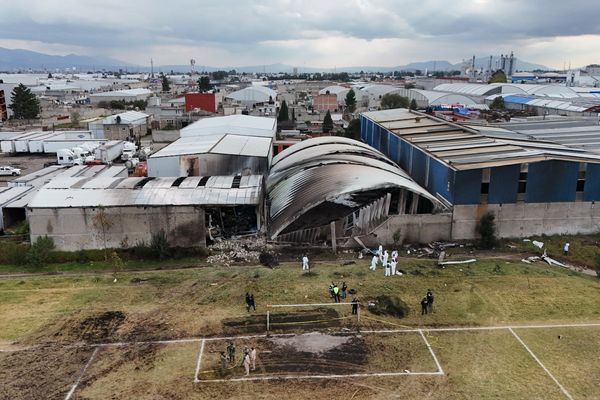Even if you have the most basic historical knowledge, you are probably aware of the period called the Middle Ages. Sadly, many think that it was a very dull time, which is very far from the truth. How could such a long period be tedious? So many things happened during it!
Generally, the whole era is quite misrepresented. Well, let's take this list and Medieval expert's observations as a chance to educate ourselves a little bit today, shall we?
#1
A proper education was difficult to come by during medieval times, so if women wanted to receive a higher education, they had to join a convent. This led to the fact that many of the earliest female intellectuals were nuns. For example, Sister Juliana Morell is believed to be the first woman in the Western world ever to earn a university degree.

Image credits: history
#2
Salt was very valuable in the Middle Ages, and, sometimes, it was referred to as "white gold." And since it was so valuable, roads were built specifically for transporting it. One of the most famous of these roads was the Old Salt Route in Northern Germany.

Image credits: ekaterina shishina
#3
Medieval books were made of parchment -- a writing material made from specially prepared untanned skins of animals. Preparation of a single skin was done by a professional parchmenter, and it took weeks, which was one of the reasons why books were so expensive at that time.

Image credits: getty edu
The Middle Ages, or medieval times, was a period in history that lasted approximately from 500 to 1500 AD. This interesting historical period brought the world major developments whose influence is felt even today.
And so, to talk about it, Bored Panda got in touch with Tim Eveland, who has been studying the medieval ages on his own and in university for over 10 years. He also has a blog, “The Medieverse,” related to the subject.
Speaking of studying the Middle Ages in university, our interviewee said that many people aren’t aware that it’s a whole separate field from history. Many universities around the world have a medieval studies department. Typically, students in these programs study medieval historical events more closely than general history students.
Sadly, in many universities, these departments are underfunded. For instance, at the University of Victoria, where Tim studied, this department might be shut down soon as it's deemed not important enough.
#4
In Medieval Europe, inflated pig bladders were used as early footballs. Eventually, the bladder started getting covered in leather so it would stay round for longer.

Image credits: pandlesportswear
#5
Since the 13th century, animals, including insects, could be tried and convicted for crimes. If found guilty, they were sentenced to death. In such trials, there used to be human witnesses and even lawyers (in ecclesiastical courts).

Image credits: wikipedia
#6
In the Middle Ages, metal sewing needles were owned only by the richest of women. Those who couldn’t afford them used needles made from natural materials: bone, boar bristles, wood, and so on.

Image credits: history
This lack of education about the Middle Ages leads to scary consequences. For example, people associate medieval pagan symbols with modern racist groups. As Tim said, “Today, we see alt-right political groups commandeering medieval symbols, such as pagan devices and the Templar cross, to strengthen their arguments, and they obviously don't know what these symbols actually mean.”
Generally, people tend to imagine the Middle Ages quite inaccurately. Typically, the images of knights, swords, horses, and other similar things come to mind.
Our interviewee Tim pointed out that the media people consume shapes how they understand the medieval period: “Unless someone is taking the time to study the real Middle Ages on their own, it's really easy to assume the stuff you're reading in fiction, the stuff you're seeing on TV, and the stuff you're doing in video games might have some historical sense to it.”
#7
There were various punishments for criminals in the Middle Ages. Some of them might sound very weird and kind of terrifying today: apologizing while wearing a white sheet, wearing animal masks and humiliating badges, being suffocated in mud, and some others.

Image credits: bustle
#8
During the Black Death, so many sheep died that Europe experienced a wool shortage.

Image credits: history
#9
In the mid-14th century, both men and women wore shoes called crakow. They were named after the city Kraków in Poland. They also had other names, such as poulaine or pikes. The shoes were long, pointed, and spiked. Occasionally, these shoes were condemned by Christian writers of the time as demonic. Kings liked to tax them as luxuries, restricting their use to the nobility.

Image credits: wikipedia
Once a person takes time to study the period, they can clearly see how misrepresentative certain media can be. Tim gave an example – the myth that the Vikings wore horned helmets. This idea dates back to 19th-century opera, when opera singers wore them likely because they saw some kind of artistic illustration. Then, films in the early 20th century carried this misconception on.
Nowadays, due to textual and archaeological evidence, we know that Vikings never wore horns on their helmets. So, we have Vikings in TV shows wearing mascara and raw leather armbands instead. Yet, the situation isn’t inherently better. “While we no longer see horned helmets, the problem doesn't seem to be getting any better, and every time someone working in media invents a new misconception, it has the chance to lead their viewers astray.”
The Vikings’ helmets aren’t the only misconception about the Middle Ages. Here, Tim also gave some examples. This time, it’s fire arrows and sword-fighting techniques used in movies: "Fire arrows did exist in the medieval period; however, they acted and looked much differently than fire arrows in movies."
#10
Charlemagne, a medieval emperor who ruled much of Western Europe from 768 to 814, is now sometimes referred to as the father of Europe. But he is not only the father of Europe -- he was a father to as many as 18 children of his own. Reportedly, he was a devoted father who encouraged his children’s education and loved his daughters so much that he didn’t let them marry while he was alive.

Image credits: history
#11
Up to the Tudor/Elizabethan ages (1485 – 1603), swans used to be eaten by the aristocracy. Their popularity as a dish ended when all swans in England were declared the property of the monarch.

Image credits: the guardian
#12
Between the years 1315 and 1322, western Europe suffered from incredibly heavy rainfall – up to 150 days of rain at a time. This made farmers struggle to plant, grow, and harvest crops, which meant that the staple food, bread, was in peril. Combined with brutally cold winter weather, around 10-15% of people in England died during this period.

Image credits: historyextra
"In movies, fire arrows are massively deployed and used against personnel. In medieval times, fire arrows were used sparingly and were expensive to produce, and they weren't used against personnel per se but rather against buildings during riots or sieges."
Then, with the swords and their techniques, the situation is even worse. Tim revealed that he hasn't seen a movie where sword fighting has been presented accurately! “Actors use choreography, which is based on Olympic fencing and looks more akin to ballerina dancing than real medieval sword fighting.”
If a person wants to see a realistic sword fight, they can go see events of a sport called historical European martial arts (HEMA). If you watch any of their events, for instance, the Swordfish Tournament, and compare it to sword fights in Hollywood movies, the difference is clear as day.
#13
The privileged class of the Middle Ages always wanted to flaunt their status through their belongings. Besides their money, they liked rare possessions that had to be sourced and transported from far away. These possessions included things such as brightly colored silk, spices, and exotic animals like monkeys, tropical birds, and tigers.

Image credits: history
#14
Medieval writers didn’t write down their texts themselves, as, at the time, writing or the work of a scribe was seen as a labor for not-so-clever people. So, writers used to dictate their thoughts to scribes.

Image credits: historyextra
#15
Due to a mistranslation, medieval people commonly believed that the Bible likened Jesus to a unicorn, so a unicorn repeatedly popped up in religious medieval art.

Image credits: livescience
That’s what annoys Tim – why is Olympic fencing-based choreography used for medieval sword fights in movies if those that HEMA does not only look better but are also way more accurate? “In HEMA sporting events, they use synthetic armor, and not every little aspect about it can be 100% historically accurate, but it's a way better system for filmmakers to use to portray sword fights if they were willing to switch away from the ridiculous ballerina moves that we're used to seeing today.”
Thankfully, due to online discussions nowadays, many medieval misconceptions get debunked pretty quickly. Yet, Tim identified a bad side of this, too – the debunked theories are being replaced by even weirder ones. Well, the internet being a weird place isn’t a new thing, is it?
Well, if it weren't for the internet, our ability to find fascinating facts about the Middle Ages, like the ones in this list, would be limited. So, let’s enjoy this privilege, and let’s upvote the most interesting ones!
#16
In the Medieval era, spectators of public executions hunted down artifacts associated with the condemned, for example, the hangman’s noose, which was believed to hold special powers. Sick people would wrap the ropes around their heads as a cure for headaches and fevers. Gamblers and cardsharps believed that owning a piece of a noose would keep them in good standing with Lady Luck.

Image credits: history
#17
During the Middle Ages, tattoos had several functions. Some of them were used as a form of punishment for criminals. Others were gotten by Christian pilgrims to show off their devotion and to commemorate their journey to holy sites. Some professions or people from certain social statuses also got tattoos. For example, knights would get tattooed to show their allegiance to a particular lord or kingdom, while sailors would commemorate their experiences at sea.

Image credits: funhousetattoosd
#18
In the Middle Ages, a disease called leprosy, now known as Hansen's disease, became visible in communities across England. It affects the skin, mucosal surfaces of the upper respiratory tract, the peripheral nerves, and the eyes. Sometimes, during medieval times, it was referred to as the “living death,” as its victims were often treated as if they were already dead. Funerals were organized to declare those with the disease “dead” to society, and after this, relatives were allowed to claim their inheritance.

Image credits: historicengland
#19
In the Middle Ages, people used to host theater performances, trials, local elections, and many other social activities in cemeteries.

Image credits: ghostsfreaks
#20
In 1314, football was officially banned in England by more than 30 royal and local laws. This was due to complaints by London merchants to King Edward II of England about “great noise in the city caused by hustling over large balls from which many evils may arise which God forbid[s].”

Image credits: wikipedia
#21
The term Dark Ages originated from Renaissance scholars who viewed ancient Greece and Rome as the most successful time period for humanity and looked down on the Middle Ages. They dismissed the latter period as a chaotic time of no great leaders, no scientific accomplishments, and no great art.

Image credits: history
#22
Around 1000 A.D., bezoars (hardened, pearl-like clumps of indigestible matter that form in the stomach lining of animals) became known as mystical good luck charms in Europe and Asia. They were worn as protective amulets, mounted in gold settings, and believed to have curing powers, or to be more precise, to contain a small remnant of toxin that could serve as an antidote to poisons. They were also believed to help with dysentery and epilepsy. During the Black Death, they were even laid on the bodies of plague victims in the hope of curing their sores.

Image credits: history
#23
In medieval times, mirrors weren’t as reflective as they are now, so people went their lives only having a hazy idea of what they looked like. Also, mirrors were considered luxury items and were owned mainly by upper-class women.

Image credits: history
#24
In medieval England, eels were a currency. The transactions varied from single digits to tens of thousands of eels. Peasants would use this fish to pay for a variety of things, including their rent. Eels were described to be “somewhere in between a delicacy and an everyday item.” The reasons why the transactions of eels died down are unknown.

Image credits: atlasobscure
#25
During the medieval period, the length of a man's shoes reflected his social status. So, to extend their shoes, some men used materials like whalebone.

Image credits: allthatsinteresting
#26
There were two main types of dances in medieval times. One was the farandole -- a line dance. It was danced with people holding hands, but the leader left their left arm free. The dancers moved in a winding labyrinth pattern, mainly clockwise, and the leader sometimes did other movements.
The other type, branle, was a side-to-side movement, and it was performed by partners, either in lines or circles, who alternated large sideways steps to the left with an equal number of smaller steps to the right.

Image credits: medeltiden kalmarlansmuseum
#27
It is believed that the invention of mechanical clocks originated from the tower clocks built in the region between Germany and Italy between 1270 and 1300.

Image credits: thecollector
#28
Some scholars prefer the term medieval instead of the Middle Ages because the latter makes the period sound like it was unimportant.

Image credits: historyforkids
#29
The Tower of London was initially designed to be a battlement, but it became a prison after King Henry I assumed the throne in 1100. One of his first acts was to order the arrest of Ranulf Flambard, the Bishop of Durham.

Image credits: history
#30
People in the Middle Ages believed that bad weather could be caused by bad people who unalived others, got into incestuous relationships, started family quarrels, or simply performed other sins. Some also believed that bad weather could be caused by witches and sorcerers who aim to destroy crops.

Image credits: historyextra
#31
During times of heightened anxiety about the plague, rogue practitioners sometimes sold counterfeit medical remedies. Some of these counterfeit remedies prevented sick people from seeking more beneficial help, and some of them were even poisonous.

Image credits: historyextra







